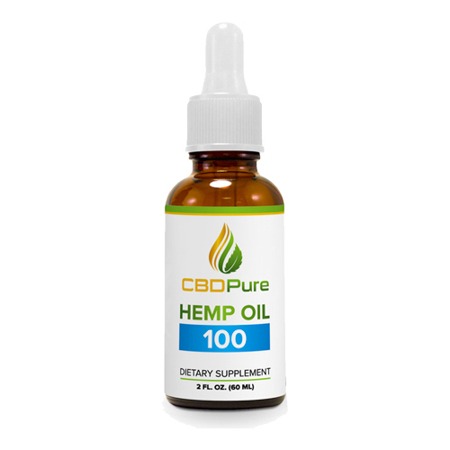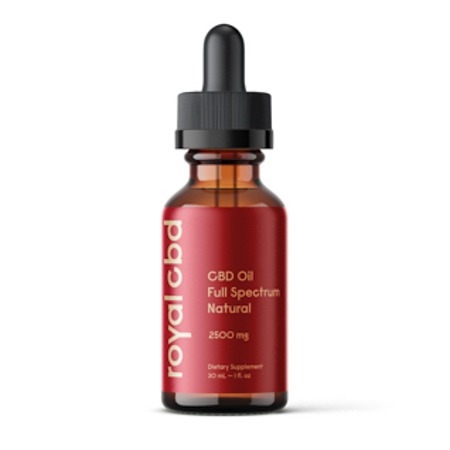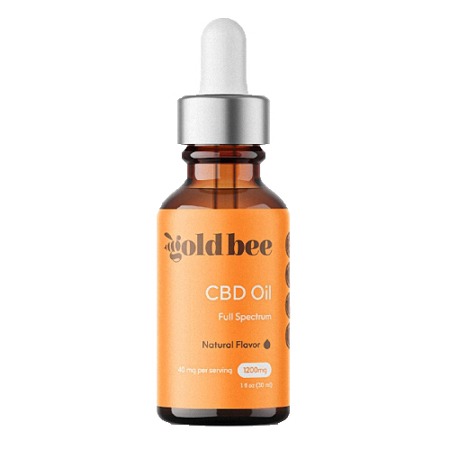Your mother (or grandmother) knew exactly what to do when you felt nauseous.
- “Drink some nice ginger tea!”
- “That didn’t work? Here’s some peppermint tea!”
- “Still not better? Drink this lemon juice and salt!”
- “Wow, this is a stubborn one. Warm water and baking soda coming up!”
Some home remedies actually can relieve nausea and stop vomiting some of the time. Then again, mom and grandma probably had no other choice. CBD wasn’t legal for sale when you were growing up.
The explosion of CBD sales online and at local stores in virtually every American city has made cannabidiol (the formal name for CBD) available for all sorts of patients – and for those who believe taking it regularly can help with general wellness.
Even if you don’t use it regularly, though, having some CBD oil on hand could be a welcome alternative if you’re suddenly stricken with nausea and need fast relief.
Cannabidiol’s anti-emetic properties haven’t been definitively proven yet, since scientists have only been researching CBD for a few years. But the initial research is promising – and if you’re not sure whether to try it, ask anyone who’s used CBD oil to end a bout of persistent nausea or vomiting. You’re likely to become a convert.
When you’re nauseous, you want relief in a hurry. That requires a very high-quality product because it will retain all of the cannabidiol’s potency, and it will act quickly. After all, it doesn’t really help to take something you think will ease your nausea and then have to wait a few hours before it takes effect.
Here are the best CBD oils for nausea available today.
Best CBD Oil for Nausea
1. Royal CBD Oil
When a new product bursts onto the scene, many companies jump into the marketplace, trying to make a quick buck. For the most part, those manufacturers care a lot less about the product itself than they do about the profits they could make. The CBD market has certainly seen its share of those vendors since the Hemp Act legalized the sale of cannabidiol in 2018.
We prefer companies that focus on quality rather than the potential of quick money – companies like Royal CBD. A small group of cannabis devotees started the operation several years ago to produce high-quality CBD in small batches and raise industry standards. That philosophy is apparent in Royal’s products.
Their full-spectrum CBD oil is sourced from organic, GMO-free West Coast hemp. The cannabidiol is extracted via the supercritical CO2 method, which costs more but produces the most potent CBD. The carrier oil is top-shelf MCT oil from coconuts, and the mint, berry, and vanilla flavors are all provided by natural essential oils. (Royal also offers a natural flavor option).
There are four potencies to choose from, but the best starting point for treating nausea is the lowest: 8.5mg/ml (in a bottle with total CBD content of 250mg). Remember that the higher the dose, the less likely CBD oil is to tame nausea and vomiting. If you want to use the oil for other purposes, however, Royal has potency choices all the way up to 83mg/ml.
Things We Liked:
- Full-spectrum oil with the full entourage effect
- Organic, non-GMO West Coast hemp
- Cannabidiol extracted by supercritical CO2 method
- Four flavors, only natural essential oils used
- Low-potency options for nausea, higher options for other uses
Things We Didn’t Like:
- Rather pricey
2. Gold Bee CBD Oil
Here’s another premium CBD manufacturer. Gold Bee is so focused on quality that they manufacture all of their products in just one facility (to prevent contamination) and produce in such small batches that it can be difficult to find your choice of CBD oil on their website. It sells out that quickly.
The specifics will sound familiar: full-spectrum oil with full entourage effect, organic hemp from local farmers (in Colorado and California), supercritical CO2 extraction, MCT carrier oil, and no artificial ingredients of any kind. In fact, the only ingredient that’s added to Gold Bee CBD oil is natural stevia and honey. Gold Bee also offers two unique flavors; you can pick between Kiwi or Lychee. They are both delicious!
Gold Bee doesn’t sell high-potency CBD; its highest strength level is 80mg/ml (2400mg of CBD per bottle). That shouldn’t matter if you’re buying CBD oil for nausea, though. Fortunately, if you want a lower dose, the company offers a lower strength – 1200mg of CBD per bottle, which is their best seller. CBD Oil is the most versatile way to consume; measure how much oil you needed with the dropper. It does the job well – if you’re able to find it in stock.
Things We Liked:
- Organic American hemp is grown in Colorado and California
- Full-spectrum oil with the entourage effect
- High-end supercritical CO2 extraction, MCT coconut carrier oil
Things We Didn’t Like:
- Only three strength and two flavor choices
- Can be hard to find
3. CBDPure Hemp Oil

The full-spectrum oil from CBDPure sounds a lot like the Gold Bee product. The only production differences are that organic hemp comes from Washington State. The cannabidiol is extracted via CO2 (leaving it slightly less potent than the supercritical method). The only difference you’ll notice when buying this CBD oil for nausea is that there are no flavor choices other than “natural hemp.”
If you want a versatile CBD oil to be used for its other health benefits, you’ll find that the highest potency level that CBDPure offers is even lower than that of Gold Bee, at just 33mg/ml. But if you want it for nausea, the two companies each offer a low strength option of 10mg/ml, which is definitely a workable level.
One definite plus: you’ll probably find it easier to purchase CBDPure Hemp Oil than our top two choices since the company produces at higher volumes and is rarely sold out. It’s a good fallback product.
Things We Liked:
- Washington State, organic hemp
- Full-spectrum oil with <0.3% THC content
Things We Didn’t Like:
- The extraction method (CO2) is not optimal
- No flavor-alternative to “natural hemp”
- Higher potency options aren’t very high potency
CBD Oil for Nausea: Buying Guide
The home remedies for nausea we mentioned earlier remain part of our “folklore” because they’ve been proven to work over generations.
CBD has only been a viable product since 2018 when the U.S. government legalized hemp. It’s already become a go-to answer for many people suffering from nausea or vomiting, though, and research on the use of CBD oil for nausea is up-and-coming.
What Causes Nausea?
To understand why cannabidiol effectively eases nausea, you first have to understand what causes that sickening feeling.
Nausea is a symptom, not a disease, and many issues can make you feel nauseous. Common ones are food poisoning or other bacterial infections that affect the GI tract, motion sickness, reactions (like heartburn and GERD) to specific types of food, and chemotherapy treatments.
CBD can’t prevent most of those initial problems. But it can do something else almost as important.
When the body recognizes that you’re developing nausea, it jumps into action by releasing a neurotransmitter known as serotonin. It’s basically a chemical that transfers signals to the nervous system and brain.
The body may not know exactly what’s causing the problem, but it assumes that the issue is in the gastrointestinal system. Since serotonin is essential to moving food out of the GI tract (1), serotonin is meant to force irritants or “bad food” out of the body. Here’s the problem: serotonin can actually make nausea even worse. That’s why a slight feeling of nausea often gets much worse before it gets better.
How CBD Helps With Nausea

When the discomfort of nausea sets in, here’s how CBD can help. Research has found that cannabidiol interacts with the same receptors that handle signals from serotonin. In large doses, CBD appears to boost the effect of serotonin and make nausea worse, even though it helps lower stress. In small doses, though, there is strong evidence that cannabidiol lowers the effect of serotonin, easing both nausea and vomiting. (2)
Cannabinoids (the active components in cannabis, like CBD and psychoactive THC) don’t just affect serotonin. They also interact with the body’s endocannabinoid system (ECS), and that interaction is believed to play a role in suppressing nausea and vomiting. The primary benefit occurs when THC binds with CB1 receptors in the ECS. However, CBD seems to play a role in the process as well. (3)
Marijuana contains both THC and CBD. It’s one form of cannabis and has been used for quite some time to help cancer patients deal with nausea and vomiting, which often accompany chemotherapy. On the other hand, commercially available CBD is sourced from the other form of cannabis, hemp. It only contains a minuscule amount (less than 0.3%) of THC and doesn’t make it high.
But even without the “high” THC content of pot, evidence shows that small amounts of CBD can reduce nausea. It’s also been shown to prevent anticipatory nausea brought on by sights, sounds, or smells that a patient associates with previous nausea-inducing experiences.
CBD Oil vs. Other Forms of CBD
Some of the medical benefits that CBD apparently provides are useful for long-term issues like anxiety, chronic pain, heart disease, and even skin blemishes like acne (4). In those cases, it doesn’t matter if the cannabidiol takes a while to make it into the bloodstream after you’ve taken it, as long as it works.
Nausea is very different, of course. It’s an immediate problem that needs an immediate solution. Since research shows that cannabidiol is a promising treatment for nausea, it goes without saying that you need relief right away.
That would seem to rule out several forms of CBD which are commonly available.
- CBD capsules and edibles take quite a while to act since you must first digest them, and the cannabidiol must then be broken down in the liver. (The same drawbacks apply to CBD oil that’s dropped into food or drinks.)
- Topical CBD creams and ointments are only effective for muscle aches and skin treatment since cannabidiol can’t penetrate the epidermis to reach the bloodstream.
Vaping CBD is a viable option. Vapor reaches the lungs and is transferred into the bloodstream almost immediately. Most people, however, don’t want to bother with vaping – or don’t want to inhale anything foreign into their lungs.
The remaining choice is CBD oil, and for the majority of patients, it’s the most effective way to get immediate relief. The oil is dropped onto the sublingual glands (located under the tongue) and is instantly absorbed by the body. That way, there’s no hours-long wait for the cannabidiol to take effect. It can quickly stop or ease nausea and vomiting.
One question remains, and it’s a good one. How do you know much oil to use?
If you’re lucky, the company may print dosage instructions right on the label. Otherwise, you’ll have to figure it out on your own, using a medicine dropper that measures milliliters.
The potency of CBD oil is measured in milligrams (of cannabidiol) per milliliter (of oil), abbreviated as mg/ml. So the key number to look for on the bottle’s label is mg/ml. The general recommendation is to use 1-2mg of cannabidiol for every ten pounds of your body weight.
As we’ve mentioned, however, research indicates that only small doses of CBD are effective against nausea. That means using an even smaller dose than is suggested for other purposes; you may want to try starting with ½ mg for every ten pounds of your weight. Here’s an example. If the CBD’s potency (from the label) is 20mg/ml and you weigh 200 pounds, a good starting point would be 10mg of cannabidiol, the amount contained in ½ milliliter of oil.
You can always increase from there since you can’t overdose on CBD, and it doesn’t have any serious side effects. And don’t worry – dosing and taking the oil will be easy after you’ve done it once or twice.
The last remaining task is finding the highest quality CBD oil for your nausea.
Best CBD Oil for Nausea: Buying Tips
Buying CBD oil can be tricky. It’s only been legal for sale for a few years, so there are no “well-known manufacturers” to rely on. Instead, it’s up to you to do your due diligence ahead of time.
But once you understand the key attributes to look for in CBD oil, you’ll be able to judge whether a producer really cares about what’s inside the bottle or is cutting corners to earn a quick profit.
The best-quality CBD oils have these qualities in common.
- They’re full-spectrum oil. That means all hemp plant components have been extracted along with the CBD, allowing them to work together in an “entourage effect” that boosts the cannabidiol’s performance. The common alternative to full-spectrum oil is CBD isolate, which some people choose because it doesn’t contain the tiny amount of THC normally found in hemp. There’s no entourage effect with CBD isolate, but there’s also zero chance that a susceptible drug test will go “tilt” because of the <0.3% THC in full-spectrum oil.
- The CBD comes from organic hemp grown in America. Organic hemp produces organic CBD without pesticides or other nasty chemicals, and U.S. farmers have to adhere to stricter standards than their counterparts in most other nations.
- The cannabidiol has been extracted with the supercritical CO2 method, which preserves almost all of the CBD’s potency. Less-expensive methods like standard CO2 extraction, cold-press extraction, steam distillation, and extraction with natural solvents eliminate some of the CBD’s strength. (Avoid any oil produced by hydrocarbon extraction because it can leave toxic residue behind.)
- The “carrier” oil added to provide even distribution of the cannabidiol should ideally be an MCT oil. MCT oils like coconut oil do the job better than hempseed or other types of oil. The worst choice is vegetable glycerin.
- There are only two (or three) ingredients in the best CBD oil for nausea. Cannabidiol and carrier oil are the key ingredients in CBD oil; the third can be a natural essential oil for flavoring since natural hemp tastes quite raw. Any artificial flavorings or unnecessary ingredients will produce a lower-quality oil and detract from the performance of the CBD.



